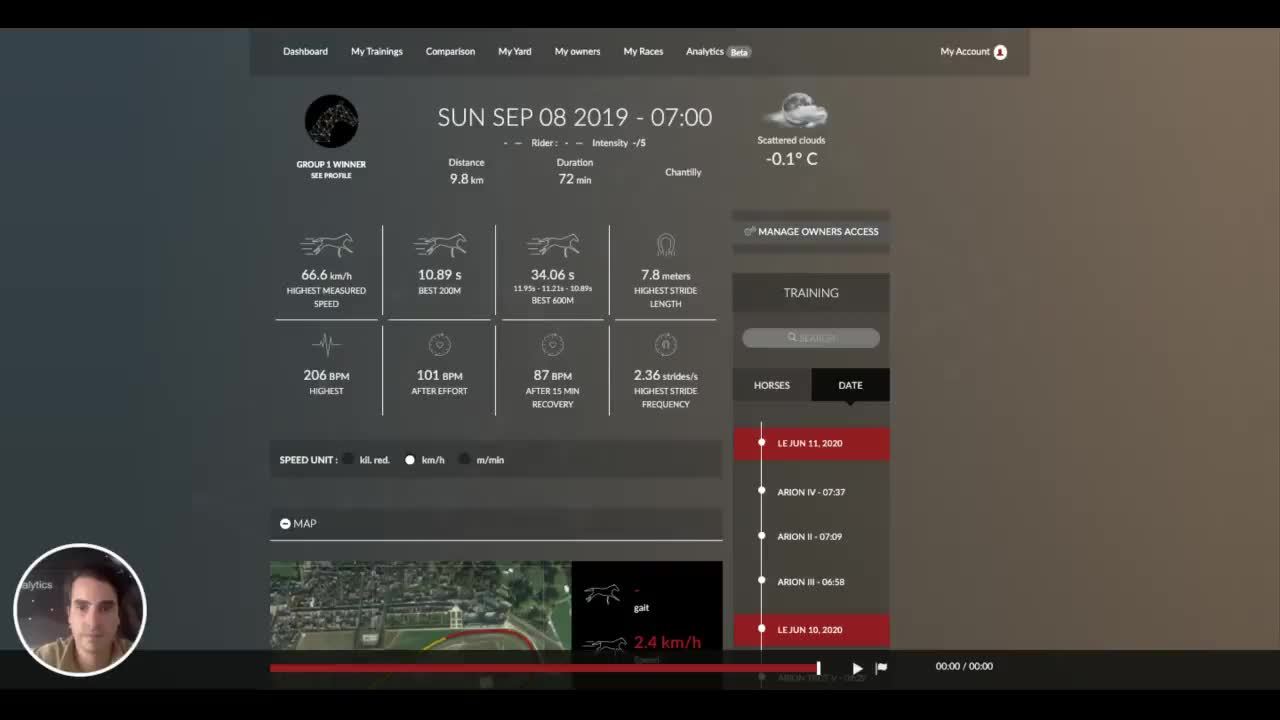It is important for a trainer to be certain that a targeted race is the right one for the horse and that he will be ready to make a result. The follow-up of the horse and his preparation before the race is therefore essential. Find out how to know if your horse is ready to race by using the EQUIMETRE data during training.
Compare the latest training sessions to a reference training session
Analyzing and comparing a horse’s current fitness to the level of fitness he had when he was performing well allows the trainer to make a more thorough assessment of the horse’s ability to run well on the day. It also allows the trainer to ascertain the horse’s physical condition before the race.
To do this, first of all, a reference training session must be chosen which will serve as a tool for comparison with more recent training sessions. In order for comparisons to be effective, the reference training chosen could for example precede a good race performance.
The first element which allows us to judge the good level of fitness of a racehorse is the elasticity of his heart rates. A horse is considered to be in good condition when he is able to progressively raise his heart rate when the effort is intensified and to lower it quickly once the intensity of the effort decreases. We want to look for lower recovery heart rates for similar or higher speed and distance.
Then, it is very interesting to analyse the reference times of the horse, especially on the best 200m and 600m. By comparing these intermediate times with the intermediate times of the training chosen as reference training, this gives a second very good indicator of the horse’s performance level and state of fitness at the given moment.
[Video presentation]: How do I know if my horse is ready to run?

Decide on a horse entry thanks to the time references of the race
When the question of a horse’s entry in a race comes up, it may be relevant to compare the intermediate times monitored with the training of the horse in question and the reference times of the race on the latest editions of the race. From one year to the next, some of the parameters of the race may vary, such as the level of the lot or the quality of the field. However, the topography and the course of the race themselves do not change.
A comparison between the horse’s times and the race times gives a clear idea of the horse’s level in relation to the level required for the race in question, although the times used for the horse are training times.
To explain this, here is an example of an Australian horse that ran on September 12th. The last two training works were done by the horse on August 25 and September 8. During these last two training sessions, the target race distance (1200m) was worked on, in race conditions mode: the horse made two reference times over this distance.


The level of the horse can easily be evaluated by comparing him to the winners or placed horses of the previous editions of the race. The reference times every 200m are compared to the times every 200m in the last two training sessions of the horse. It can be seen that during the 600m following the start, the horse maintains a stable pace, two to three seconds slower than the race times. However, it appears that between the finish in the race and the horse’s finish in training, the times are equivalent. This suggests that during the two training sessions the horse has maintained a stable performance level “without pushing too hard” before actually starting in the last 400 meters.
By conducting this analysis, the trainer decided to race the horse in this Group 2 race over the 1200m distance. His analysis was subsequently verified: the intermediate times of the horse during the race were in line with the times of the winners of previous years. The horse finished second in this group 2 race.
Keywords: horse ready to race, debutants horses, fitness improvement, fitness assessment, rachehorses, training monitoring

